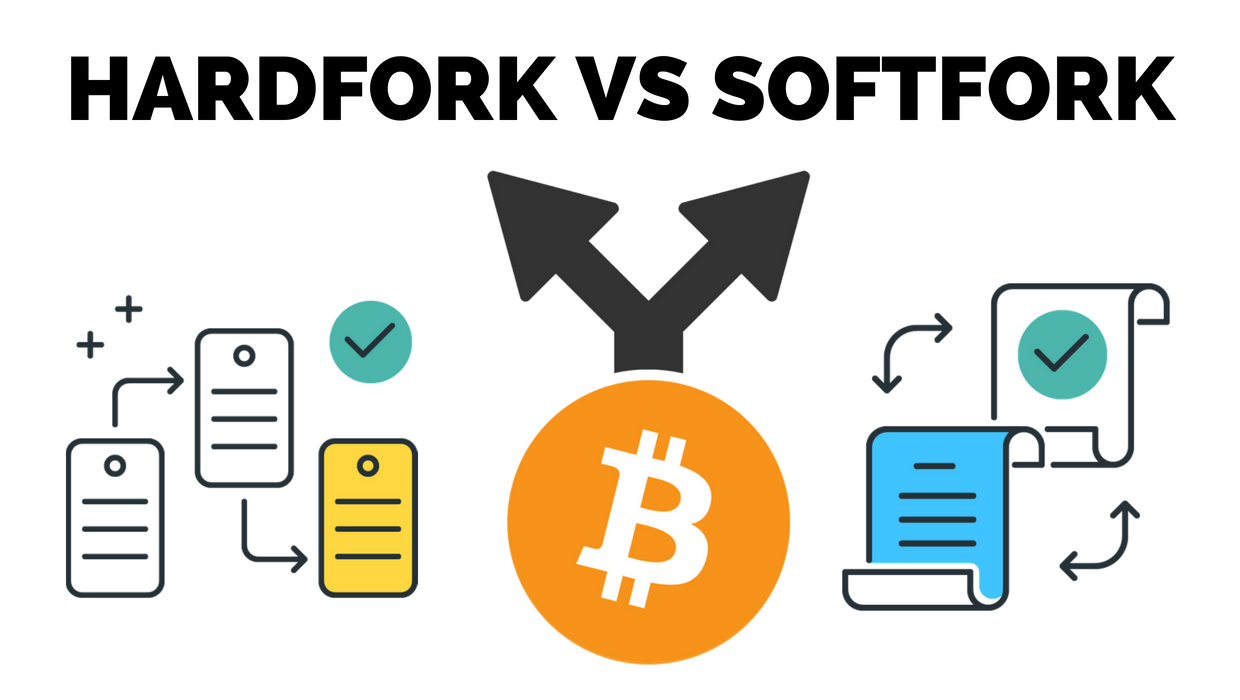Everything you need to know about forks in cryptography

In the world of crypto currencies, we use the name fork to designate a blockchain that splits into two different entities from a certain block in the case of a “ hard fork ” or undergoes a major update throughout its network in the event of a “ soft fork ". As you know, no group has complete control of a blockchain network. Every user on a network can participate, provided they follow a defined mechanism called a consensus algorithm. However, what happens if this algorithm needs to be changed?
Well, a fork is the result of a modification of the blockchain consensus protocol. A hard fork occurs if a new blockchain permanently separates from the original blockchain.
All network users must then update their software to continue participating. The Bitcoin Cash Fork of the original Bitcoin blockchain is the best-known example of a hard fork.

Get 200% Bonus after your first deposit. Use this promo code: argent2035
In this article we will talk about the concept of “fork” in cryptography. But before that, we advise you to read our article on the Cryptographic Nonce.
Let's go
What is a fork in cryptography?
In the beginning, there was Bitcoin, which was designed to function as a decentralized digital alternative to cash. Over time, more specialized currencies emerged, such as Ripple et Monero. These new cryptocurrencies didn't appear out of nowhere, many are the result of a fork.
In its broadest sense, a fork is simply a change in the blockchain protocol that software uses to decide whether a transaction is valid or not. This means that almost any divergence in the blockchain can be considered a fork.
To understand what a fork and in particular a hard fork, it is essential to first understand blockchain technology.
A blockchain is essentially a chain made up of data blocks that function as a digital ledger in which each new block is only valid after the previous one has been confirmed by network validators. Data on the blockchain can be traced back to the very first transaction on the network.
In principle, when a blockchain splits in two, it is called a “fork”. There are several types of forks, the main ones being the hard fork, the soft fork et the temporary fork. Both hard forks and soft forks play a vital role in keeping the blockchain industry functioning and managed.
In some blockchain projects, protocol updates in the form of hard forks have been established from the launch of the project.
The hard forks
A hard fork is a protocol change that requires all nodes on the network to update their software to continue participating in the network.
The nodes of the new version of the blockchain no longer meet the rules of the old blockchain, but only the new rules. The new blockchain continually diverges from the old version.
Thus, a hard fork creates two blockchains that coexist, and each blockchain is governed by its own protocol software.
A hard fork requires majority support (or consensus) from coin holders connected to the coin network.
For a hard fork is adopted, a sufficient number of nodes must be updated to the latest version of the protocol software. This allows them to use the new coin and the blockchain.
Let's take as an example of the Bitcoin network. As Bitcoin continued to attract more and more users, transactions on the network became more expensive. Some community members began to question the reasons for this phenomenon.
The problem, is that over time, the entire community, including miners, developers, and other users, couldn't seem to agree on the best way to bring about this change. After several years of discussion, two dominant schools of thought emerged.
Why do hard forks happen?
If hard forks can significantly reduce the security of a blockchain, why do they happen? The answer is simple. Hard forks are necessary upgrades to improve the network as blockchain technology continues to evolve.
Several reasons can cause a hard fork, and not all of them negative:
- Add features
- Fix security risks
- Resolve a disagreement within the community of a cryptocurrency
- Reverse transactions on the blockchain
Hard forks can also happen by accident. Often, these incidents are quickly resolved and those who were no longer in agreement with the main blockchain fall back and join after realized what happened.
Likewise, hard forks adding features and improving the network generally allow those who fail to reach consensus to join the main chain.
Soft forks
A soft fork is a kind of software update to the blockchain. As soon as it is adopted by all users, it constitutes the new standards specific to the currency.
Soft forks have been used to bring new features, usually at the programming level, to both Bitcoin and Ethereum. As the end result is a single blockchain, the changes are backwards compatible with pre-fork blocks.
Simply put, a soft fork incentivizes the old blockchain to accept the new rules. Therefore, to accept both updated blocks and old transaction blocks.
So, unlike a hard fork, a soft fork maintains the old blockchain by maintaining two paths with different sets of rules. An example of a soft fork successfully implemented is the 2015 Bitcoin SegWit protocol update.
Before the SegWit update, the Bitcoin protocol was both more expensive, around $30 per transaction, and longer. The creators of what would become the SegWit update recognized that signature data represents approximately 65% of a transactional block. Therefore, SegWit proposed to increase the block size effective from 1 MB to 4 MB.

Get 200% Bonus after your first deposit. Use this official Promo code: argent2035
The idea behind this increase was to separate or remove signature data from transactional data on each block of the blockchain, freeing up space for greater transactional throughput per block. By applying a soft fork, the old Bitcoin blockchain was able to accept new blocks of 4 MB and 1 MB blocks at the same time.
Through a clever engineering process that formatted new rules without breaking old ones, the soft fork allowed old nodes to validate new blocks as well.
SegWit – a soft fork of the Bitcoin blockchain
SegWit is a backwards compatible upgrade of the Bitcoin protocol that profoundly changes the structure of transactions by moving signature data (the witness or witness) in a separate database (segregated).
Its main purpose is to correct the malleability of transactions, but it also allows to increase the transactional capacity of Bitcoin, to improve the verification of signatures and to facilitate future modifications of the protocol.
Those who defended the proposition “ followed » considered that it was not necessary to increase the size of Bitcoin blocks indefinitely, due to scalability problems; the proper functioning of a node would then require a lot of hardware resources.
More importantly, they believed in the one-megabyte block size limit that Satoshi Nakamoto added to Bitcoin in 2010. To stay in line with Nakamoto's vision, this group researched a way to allow more transactions per block while keeping the maximum block size the same, and that's how SegWit was born.
Difference between hard forks and soft forks
Hard forks are not the only way to upgrade the software behind a cryptocurrency. Soft forks are, on the other hand, considered a safer and backward compatible alternative, which means that nodes that don't upgrade to newer versions will still see the chain as valid.
The main difference between a hard fork and a soft fork is the need to update the node software.
The nodes of the new version of the blockchain accept the rules of the old one for a given time, in addition to the new rules, and the network keeps the old version while the new one is created.
A soft fork can be used to add new features and functions that do not change the rules a blockchain must follow. They are often used to implement new features at the programming level.
To better understand the difference between hard forks and soft forks, it can be thought of as a basic operating system upgrade on a mobile device or computer.
After the upgrade, all applications on the device will still work with the new OS version. A hard fork, in this scenario, would be a complete change to a new operating system. In one of our articles we explain Everything You'll Need to Know About Crypto Airdrops



















Leave comments